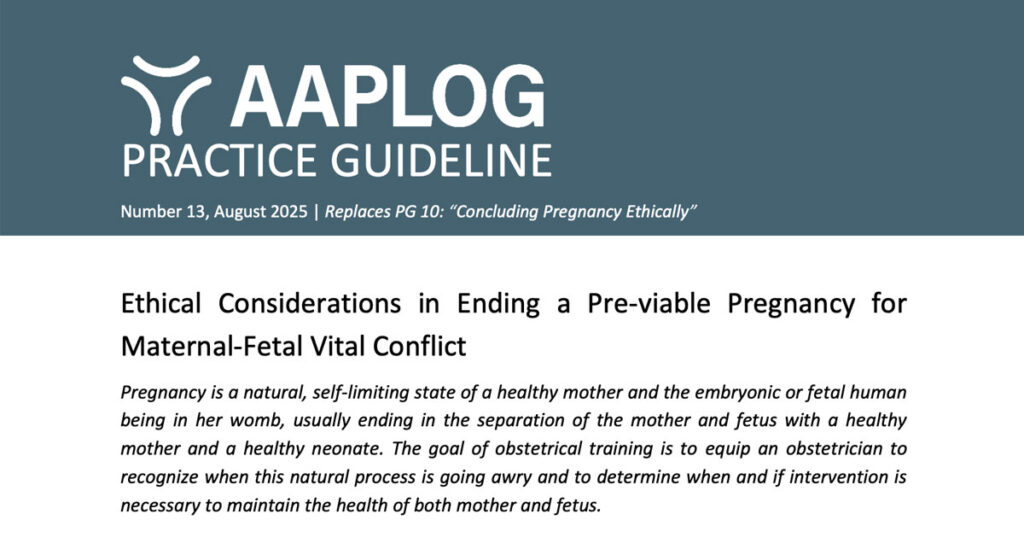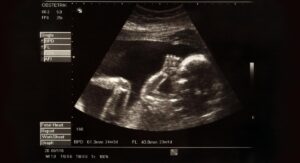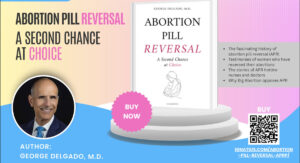In recent years, a major spotlight has been shone upon the issue of maternal-fetal vital conflict, i.e., medical situations in which a pregnancy must be ended to save the life of the mother. This is an ethically fraught issue that many of us deal with in our practices. Pro-abortion advocates and members of the “mainstream media” have focused on these situations as a way of justifying unregulated and unrestricted induced abortion, while simultaneously sowing fear and confusion about what is actually occurring when we perform maternal-fetal separations to save women’s lives. To address the ethical and medical questions surrounding this topic, AAPLOG recently published a crucial new Practice Guideline on Ethical Considerations in Ending a Pre-viable Pregnancy for Maternal-Fetal Vital Conflict.
This comprehensive and conscientious document addresses every facet of the confusion and ethical dilemma caused by maternal-fetal vital conflict, beginning with the definition of induced abortion. ACOG recently attempted to change this definition, allowing for a definition so broad that it can include Cesarean sections and treatment of ectopic pregnancies. A more accurate definition of induced abortion is: “1. The use of any drug, device, surgery, or any procedure or intervention with the purpose of ensuring the death of the living human being in utero before, during, or in the process of separating the mother and her embryo or fetus. 2. Any pre-viable separation of the mother and the living embryo or fetus in utero without proportional danger of maternal death or permanent irreversible damage to one or more of her major body systems.”
With that definition in mind, the practice guideline breaks down the ethics of separating a mother and her pre-born child through the ethical Principle of Double Effect. To further clarify the ethical response to these medical emergencies, specific examples of maternal-fetal vital conflict are examined.
The practice guideline includes discussion of the methods necessary for the separation of a mother and her child, including ectopic pregnancy treatment, induction of labor, suction dilation and curettage (D&C) or dilation and evacuation (D&E), and hysterectomy. The final section of the document includes frequently asked questions, such as, “Is it ethically acceptable to end a pregnancy for a life-limiting fetal anomaly without a maternal indication?”






